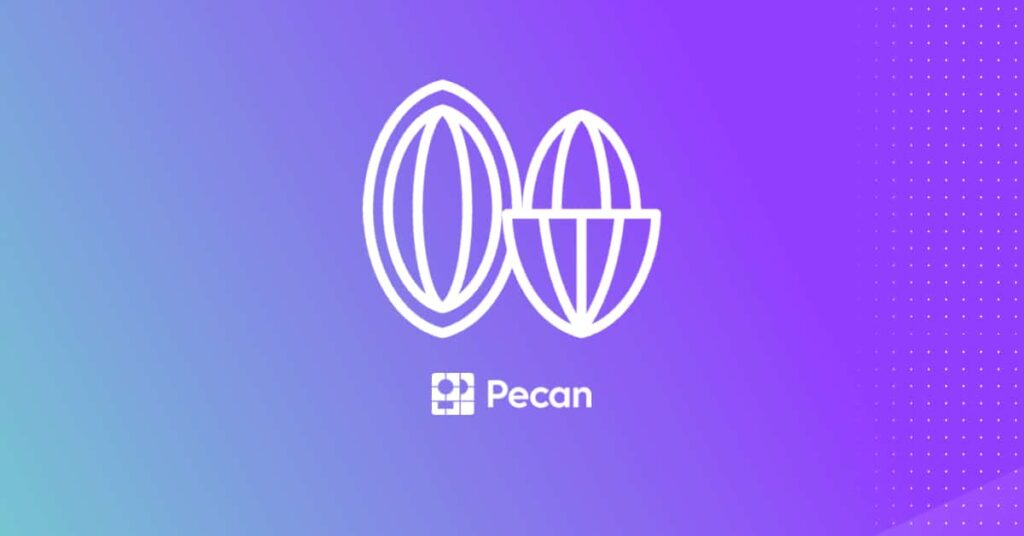- In a nutshell:Large Language Models (LLMs) can revolutionize businesses by enhancing decision-making and driving innovation.
- Data leaders need to understand how to maximize LLM impact for a competitive advantage.
- Implementing LLMs involves careful integration, strategic utilization, and building a comprehensive roadmap.
- Tools like ChatGPT and Pecan's Predictive GenAI can be leveraged for various business applications.
- Addressing ethical concerns and exploring future trends in LLM adoption are crucial for long-term success.
Adopting Large Language Models (LLMs) has the potential to revolutionize businesses by enhancing decision-making processes and driving innovation. As a data leader, understanding how to maximize the impact of LLMs within your organization is crucial for gaining a competitive advantage in the market. In this post, we'll provide a comprehensive roadmap for data analytics managers, directors, and chief data officers to navigate the complexities of LLM adoption and effectively leverage tools like ChatGPT and image generation tools. By exploring key considerations, integration strategies, and potential tools like Pecan's Predictive GenAI, data leaders can build a roadmap that aligns with their business objectives and empowers predictive AI initiatives.
Understanding Large Language Models (LLMs)
Businesses today understand that intelligent decision-making is key to maintaining a competitive edge. In the era of AI and machine learning, large language models (LLMs) have become increasingly popular tools for streamlining decision-making processes using real-time data.
ChatGPT and Image Generation Tools
LLMs are designed to understand, generate, and improve human language. They can interpret text inputs and produce relevant outputs, aiding in automating tasks like answering client questions, creating content, and summarizing long documents, to name a few. OpenAI’s Chatbot GPT-3 (ChatGPT) is an example of a well-known and popular LLM. It uses machine learning algorithms to process and understand human language, making it an efficient tool for customer service applications, virtual assistance, and more. Image Generation tools, on the other hand, are AI models that can generate images from descriptions. These tools leverage LLMs to understand the text input and then generate a corresponding visual representation. This technology has significant applications in industries like real estate, fashion, and design, where visual images can greatly contribute to product development and customer service.
Applications of LLMs in Business
Large Language Models can serve many purposes across a wide range of industries. For example, content creators can use these models to generate ideas for their next article or blog post. In customer service, the models can help automate responses to frequently asked questions, saving valuable time and resources. In the healthcare sector, LLMs can be used for tasks including converting clinical notes into structured data, predicting patient risks, and creating personalized health plans. The applications are vast and diverse, spanning from simplifying administrative tasks to aiding in significant research and development. LLMs are capable of amazing things, and grasping these capabilities is the first step to using them to further the success of your unique business.
Implementing and Leveraging LLMs in Business
Once you understand the concept of Large Language Models and their potential applications, the next logical step is to implement them into your business. Successful LLM adoption isn't just about selecting the right tools; it also depends on a thoughtful integration strategy and effective utilization to maximize the business impact.
Integration Strategies for LLM Adoption
The success of implementing any new technology hinges on how well it is integrated into your existing system, and LLMs are no exception. Your strategy should be planned with careful consideration of your company’s current infrastructure, data availability, and privacy regulations. The first step involves understanding your data team's requirements and limitations while identifying the right LLM tools to meet your business’s needs. These could be LLMs like ChatGPT for customer service automation or image generation tools for visual applications. Once the appropriate LLMs are identified, your team must be trained on the model’s functionality and uses. Comprehensive training programs equip your team with the necessary skills so that they can leverage LLMs efficiently and effectively.
Maximizing Business Impact through LLM Utilization
Simply implementing LLMs is not enough if you want to experience all the benefits they have to offer. They must be utilized strategically to optimize their impact on your business. Begin by identifying key areas that can benefit from automation or improved decision-making and introduce LLMs accordingly. Once they’re in place, regularly evaluate the performance of your LLMs and make the necessary adjustments to get the best results. Experiment with different combinations of models and tools to identify what works best for your unique business needs and objectives.
By wisely integrating and effectively leveraging LLMs, your business can enjoy improved efficiency, reduced operational costs, and better decision-making capacity. The true power of LLMs lies in their ability to customize an ever-evolving business landscape, making them invaluable assets for future-proofing your organization.
Building an LLM Roadmap
Once your business understands the impact of large language models and how they can be integrated and leveraged for success, the next step is to build an LLM roadmap. A roadmap serves as a strategic plan that outlines the steps needed to meet a particular goal. In this case, it will help data leaders plan and structure their LLM initiatives, from identifying objectives to evaluating potential tools for adoption.
Key Considerations for Planning LLM Initiatives
Successfully implementing LLMs in your company requires careful planning and consideration. You need to identify the business objectives, evaluate the resources available, and choose the right tools accordingly. Before diving into the detailed planning process, you must understand that each organization has unique needs and objectives, which means a one-size-fits-all approach might not work. Instead, tailor your strategy to your specific business context and needs. This involves considering the size and skill set of your data team, the nature of your business, the type and scope of data you handle, and the specific challenges you aim to address with LLMs. You should also remember that LLM adoption is not an overnight process. It requires time, patience, and continuous learning. Starting small with pilot projects and gradually scaling up as your team gets more comfortable with LLMs can often yield better results than a hasty, large-scale implementation. Additionally, solutions like Pecan that offer a fast-track to experimentation can provide an excellent starting point.
Identifying Business Objectives and Use Cases
The first step in planning your LLM initiatives is defining the business objectives you aim to achieve. This step helps to align the use of LLMs with your company’s strategic goals. A few examples of business objectives could be improving customer service, enhancing productivity, or driving product innovation. Once the objectives are clear, start identifying the use cases where LLMs can be integrated to achieve them. For example, if the objective is to enhance customer service, the use case could be integrating an LLM like ChatGPT to automate responses to customer inquiries.
Assessing Data and Infrastructure Requirements
After identifying the business objectives and use cases, evaluate the data and infrastructure you have available. LLMs require a significant amount of data for training; therefore, it's crucial to have a clear understanding of the type of data required, your data quality, and the technology infrastructure to support them. Consider your data volume, variety, and veracity. LLMs perform optimally when they have access to large, diverse datasets that are high in quality, free from bias, and relevant to the task at hand. It’s also wise to think about your organization's ability to collect, clean, format, and manage this data securely and ethically. What capabilities can your infrastructure handle? The computational requirements for training and deploying LLMs can be enormous, so assess your current technology stack's ability to handle this. This assessment should include your storage capabilities, processing power, and network speed. If your existing infrastructure is not up to the task, consider upgrading or using cloud-based solutions.
Evaluating Potential LLM Tools for Adoption
There are several LLM tools in the market, and each has its own unique capabilities. The tools you choose should suit your business objectives and use cases. When evaluating potential LLM tools, consider their strengths and weaknesses. Some tools might excel at tasks like generating text or answering questions, while others are geared toward image generation. The capacity of these tools to interpret complex instructions can also vary. Other important factors include the amount of training data required, the tool's processing speed, and its versatility across different applications. It’s wise to consult with your data team and conduct some pilot tests to gauge the performance of different tools. It’s also essential to consider the support provided by the tool's vendor, including the availability of technical support, any training required, and the regularity of updates. These factors can significantly affect the tool’s implementation and use. While assessing these tools and establishing KPIs for AI, keep in mind the ethical considerations related to using them. Some might be prone to generating biased results or have privacy issues. Engaging a team that includes ethics and compliance personnel early in the tool selection process can save potential headaches down the line. Choosing the right LLM tool is like choosing the right car. It's not just about the shiny new features it offers, but also how well it fits your needs, the costs associated with maintaining it, and how well it can adapt to future requirements.
Pecan's Predictive GenAI
Pecan's Predictive GenAI is a pioneering technology that uses an LLM-powered natural-language interface and auto-generated SQL code to help data and business analysts build machine learning models — without a lot of in-depth, hand-crafted code or data science expertise. This is an example of using an LLM to power business initiatives. Machine learning algorithms can predict future events based on past data. This is particularly useful for businesses looking to forecast sales, predict customer churn, or assess risk. Pecan's Predictive GenAI stands out among a sea of predictive AI tools because it fuses generative AI with predictive machine learning. Pecan also includes automated data pre-processing capabilities. This feature can dramatically decrease the time spent on data cleaning and preparation, which allows your data team to focus more on strategic tasks. Predictive GenAI also provides interpretable AI that offers clear insights into what factors are driving the predictions, which is key for garnering stakeholder buy-in and trust. In addition to quantitative results, users can simply ask an AI assistant to help them interpret and improve their predictive modeling results, just like an everyday conversation.
Empowering Predictive AI Initiatives with LLMs
Embracing LLMs can significantly boost your predictive AI initiatives. By leveraging LLMs like Pecan's Predictive GenAI, businesses can process enormous volumes of data, identify underlying patterns, and make more accurate predictions. This can lead to improved decision-making and, subsequently, better business outcomes. To sum it up, building an effective LLM roadmap involves a thorough understanding of the business’s objectives, identifying the appropriate use cases, assessing data and infrastructure requirements, and selecting the right tools. With a well-planned roadmap, businesses can maximize the impact of LLMs, driving success and innovation in their organizations.
Challenges and Opportunities in LLM Adoption
While LLMs present a wealth of opportunities for businesses, there can be some challenges along the way. These challenges, however, also present opportunities to innovate and improve LLM tools, which drives their continued evolution.
Addressing Ethical and Bias Concerns in LLM Usage
The widespread use of LLMs has stirred debate around ethical concerns and potential biases that are inherent in the data used to train these models. These biases can surface in the model's outputs, leading to discriminatory or unethical results. To combat this, businesses must prioritize transparency and fairness in their AI initiatives. Efforts should be made to ensure the data used in training LLMs is diverse and representative and that the outputs of these models are regularly audited for bias. A diverse team can also aid in this process, as they bring many different perspectives and can better identify potential issues. Respecting privacy regulations and consumer expectations when handling data is also critical. With GDPR, CCPA, and other privacy laws, businesses must ensure compliance to avoid costly fines and damage to their reputation. Ultimately, addressing these ethical and bias concerns in LLM usage fuels the development of more robust, transparent, and fair AI systems, which will only enhance their value in business settings.
Exploring Future Trends and Innovations in LLM Applications
As businesses continue to explore the potential of LLMs, we can expect to see significant innovations in this field. More specialized LLMs will be developed over time that are designed to excel in narrow but complex domains like law, medicine, or finance. Advancements in technology will also enable LLMs to process even larger datasets, leading to more accurate predictions and decision-making capabilities. Future LLMs may be capable of understanding and generating visual, audio, or even tactile content, which will dramatically expand the areas where they can be applied. As AI ethics continues to be a hot topic, we may also see more innovations focused on transparency, bias detection and mitigation, and privacy preservation in LLMs. This will ensure that LLMs can be trusted and used responsibly in businesses.
Integrating LLMs Into Business Operations is the Future of Success
The age of AI has brought about revolutionary tools like LLMs, which are reshaping the landscape of business decision-making and operations. With a well-crafted LLM roadmap, businesses can harness the power of these models to drive significant value and competitive advantage. As they adopt LLMs, companies should not only focus on their implementation but also address the ethical concerns associated with them. As we navigate the future and embrace the continued evolution of LLMs, we must strive to ensure their ethical and responsible use. The journey of LLM adoption may be complex, but the potential benefits for businesses are monumental. As a data leader, take the first step in exploring the LLM roadmap and prepare your business for an AI-driven future. Ready to learn more about how Pecan leverages an LLM approach to predictive machine learning to empower your data team? Get a tour to learn more.








